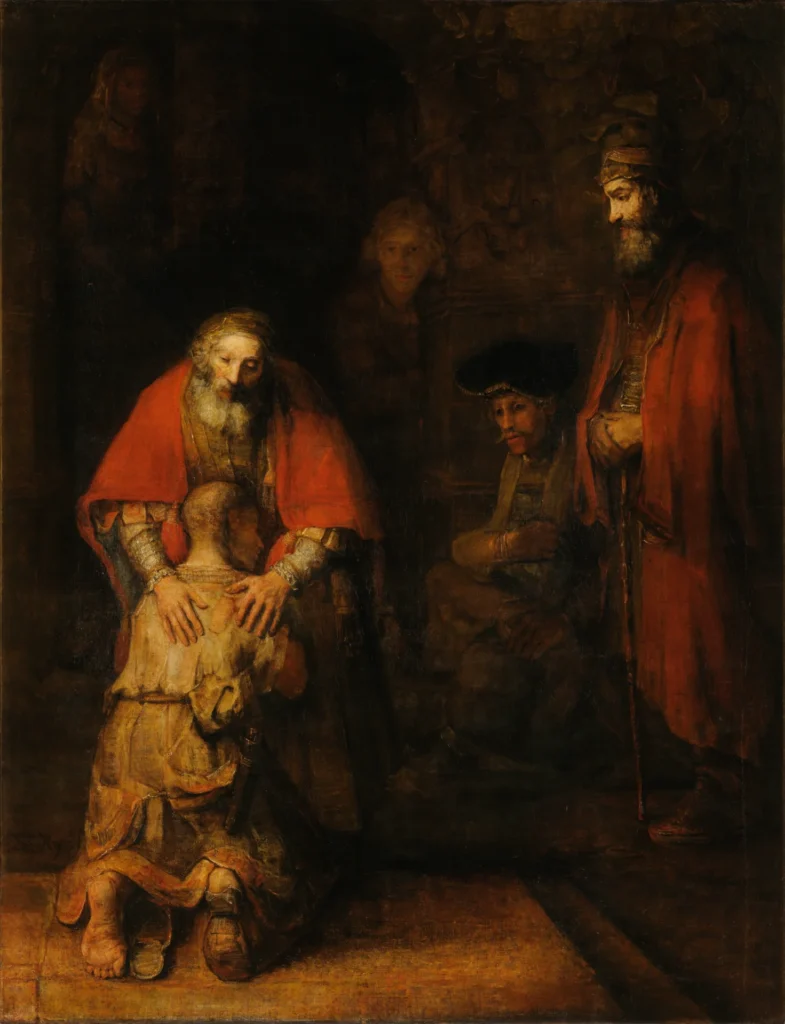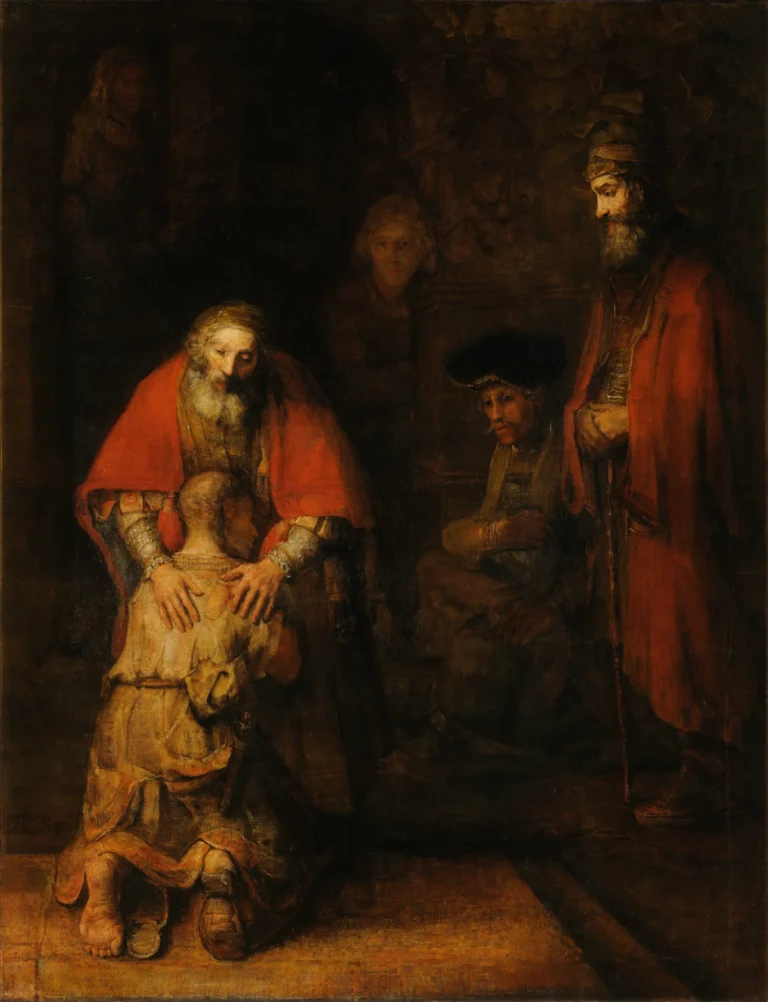The Return of the Prodigal Son
The Return of the Prodigal Son captures a deeply emotional reunion between a father and his wayward son, from the Biblical narrative found in Luke 15:11-32. In this poignant scene, the son expresses his remorse as he kneels before his father, who embraces him with open arms, embodying unconditional love. The contrasting figures of the older brother add tension, emphasizing themes of forgiveness, mercy, and the complexities of familial relationships. Rembrandt's expert use of light and shadow highlights the spiritual essence of the moment, making this a profound exploration of human emotion and connection.
1667 - 1669
About the Artwork
This painting represents a culmination of Rembrandt's exploration of human emotions and spirituality, created during a tumultuous period in his life. The prodigal son is shown in a state of degradation, poignantly contrasted with the father's lavish attire, symbolizing the disparity between worldly riches and the richness of familial love. The intricate details, such as the father's diverse gestures, capture the complexity of parental love—a blend of strength and gentleness. This artwork challenges viewers to contemplate the nature of mercy, often finding resonance in personal stories of forgiveness and acceptance.










